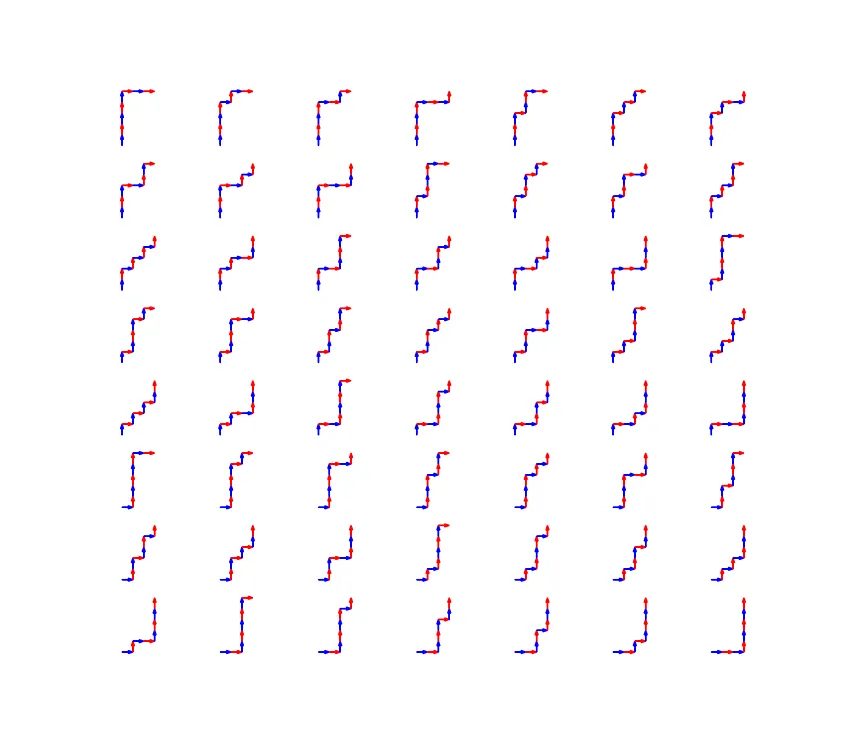If you start at (0,0) and can take one step at a time either north (0,+1) or east (+1,0), how many different ways are there to get to (3,5)?
I wanted to augment this answer on Quora with a visual representation of all the lattice paths originally given in textual form.
A quick and dirty way of generating all the possible paths in Python is this two-line solution:
import itertools
allPaths = [ "".join( x ) for x in itertools.product( "NE", repeat=8 )
if x.count( "N" ) == 5 and x.count( "E" ) == 3 ]
This is by no means the most efficient way, but it suffices for small values. There should be (5+3) choose 3 = 56 such paths.
I chose to graph them with matplotlib, which made it pretty easy to do one subplot per path.
Problems I encountered:
- Arrowheads extending beyond x=0 or y=0 got trimmed. I solved this by moving my starting position up and to the right.
- matplotlib tried to scale each subplot to the full width and height of the box, but this meant that the arrows were no longer the same length. I used
ax.set_aspect('equal', 'box' )to keep the aspect ratio equal. - Each graph is small enough that the arrowheads don't really stand out. I tried playing with the sizes without much success, and settled on alternating colors instead. I'm not entirely happy with red + blue, but green + blue didn't have much contrast.
Plot

Source Code
import matplotlib.pyplot as plt
length = 0.18
width= 0.001
head_width = 0.05
def drawPath( ax, path ):
x = 0.0 + head_width
y = 0.0 + head_width
color = "blue"
ax.set_aspect('equal', 'box' )
for d in path:
if d == "N":
dx = 0.0
dy = length
else:
dx = length
dy = 0.0
ax.arrow( x, y, dx, dy,
width = width,
head_width = head_width,
color = color,
length_includes_head = True )
x += dx
y += dy
if color == "blue":
color = "red"
else:
color = "blue"
for i, p in enumerate( allPaths ):
ax = plt.subplot( 8, 7, i + 1 )
ax.axis( "off" )
drawPath( ax, p )
plt.show()